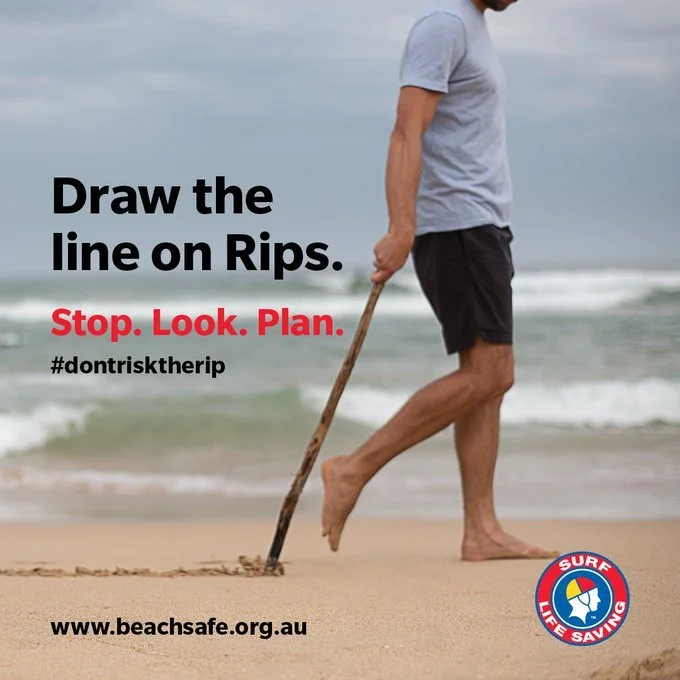January 2023 (ROTM#169) The SLSA Think Line. Stop. Look. Plan
Happy New Year! However, while many of us here in Australia are enjoying our summer holidays at the beach, there have been some tragic drownings in rip currents, often involving parents going it to try and rescue their child – mostly on beaches without lifeguards, or after lifeguard hours. Unpatrolled beaches continue to be the main location of rip current drownings, which is not surprising given that the vast majority of beaches outside of populated areas do not have pairs of red and yellow flags denoting safer swimming areas supervised by lifeguard or lifesaver services. Many of these beaches are also popular holiday locations with coastal tourist parks situated literally on the beach. My UNSW Beach Safety Research Group surveyed beachgoers on these unpatrolled beaches and found, not surprisingly, that while almost everyone was aware of the swim between the red and yellow flag message people chose to swim at these beaches because they were closest to their holiday accommodation and they wanted a quieter beach away from the crowds.
Invariably, after each tragic drowning, authorities plead for beachgoers to always swim at patrolled beaches. The flags and the presence of lifeguards are absolutely effective, but the reality is that not everyone is likely to jump in their car and drive 20 minutes to the nearest patrolled beach when there’s a beautiful beach right outside their door. It’s also logistically difficult to provide lifeguarding services on every beach. So we have to go people more than just the ‘swim between the flags’ message.
Several years ago Surf Life Saving Australia launched the ‘Think Line’ rip current safety campaign, which encourages beachgoers to draw an imaginary line in the sand when they go to the beach and think about rip currents. It’s important to Stop and think about rips and beach safety, Look for rips and any other beach hazards and have a Plan if somebody gets in trouble. Are there lifeguards and flags further down the beach? Where would you go for help? Is there anything on the beach that floats, like a boogie board, cooler, or ball that would help someone in trouble, or that a bystander rescuer could take with them if they enter the water to save another person? This picture is just one of the graphics used by SLSA in their Think Line campaign. I’m sure they don’t mind me using it!
The Think Line is a fantastic message that not only applies to rip currents, but all aspects of beach safety and it should become engrained in our beachgoing culture, much like it’s automatic that you don’t cross the road without looking both ways. It also emphasises the importance of learning how to spot rip currents, because if you are on a surf beach in Australia, there will be rip currents. The bottom line is that if you want to be safe, you should make the effort to find a patrolled beach, but if you don’t, you need to stop, look and plan for rip currents. It may save a life.
A fantastic safety campaign by Surf Life Saving Australia. Always stop and think about rip currents when you go to the beach.

